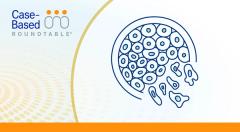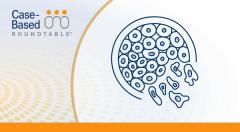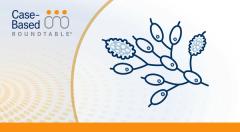
Efficacy and Treatment-Free Interval Support Earlier Use of CAR T in R/R Myeloma
Kenneth Shain, MD, PhD, discusses the rationale for giving chimeric antigen receptor (CAR) T-cell therapy in earlier lines of therapy for relapsed/refractory (R/R) multiple myeloma.
Episodes in this series

Kenneth Shain, MD, PhD, associate member in the Malignant Hematology program and director of the Myeloma Research Center at Moffitt Cancer Center, and assistant professor at the University of South Florida Morsani College of Medicine, discusses the rationale for giving chimeric antigen receptor (CAR) T-cell therapy in earlier lines of therapy for relapsed/refractory (R/R) multiple myeloma.
The FDA approvals for earlier use of idecabtagene vicleucel (Abecma; ide-cel) and ciltacabtagene autoleucel (Carvykti; cilta-cel) earlier this year permit cilta-cel to be used after 1 prior line and ide-cel after 2 prior lines. Shain says the efficacy shown vs standard-of-care supports earlier use including first relapse, and notes that there is only 1 line of therapy difference between the phase 3 CARTITUDE-4 trial (NCT04181827) of cilta-cel and the KarMMa-3 trial of ide-cel (NCT03651128). For lenalidomide (Revlimid)-refractory patients, he says both should be considered.
Shain emphasizes that CAR T-cell therapies are highly effective in terms of disease-free interval as well as allowing patients to be treatment free until the time of disease progression. He says this unique quality-of-life benefit of CAR T-cell therapy leads him to want patients to receive them as early as possible.
TRANSCRIPTION
0:08 | The new FDA approvals, both phase 3 randomized studies for both ide-cel and cilta-cel have shown that that efficacy continues to be important even in earlier lines of therapy as predicted, maybe not quite as big a difference we thought we would see looking earlier. But I think KarMMa-3 was only 1 [more] line, so it wasn't that much of a difference. But again, it definitely demonstrates that you can use these therapies in a safe and effective way in earlier lines of therapy. And they should be used in earlier lines of therapy, and as early as first relapse. I think in the context of [lenalidomide]-refractory patients…looking at other CAR T products in that setting is an important thing for patients.
0:54 | Again, [these are] very effective therapies with long-term disease and treatment-free intervals. So, I think that's...the highlight, one of the things that I find most intriguing and most important in terms of these therapies. ...You give therapy, and you don't need to give therapy for long periods of time. And watching patients come back to your clinic, the months after they get CAR T with no disease and no therapy is the happiest you see most of these folks...ever...because it's really a profound effect on them. So, I think that's what drives my thinking in terms of getting patients on these therapies as soon as we can.














































